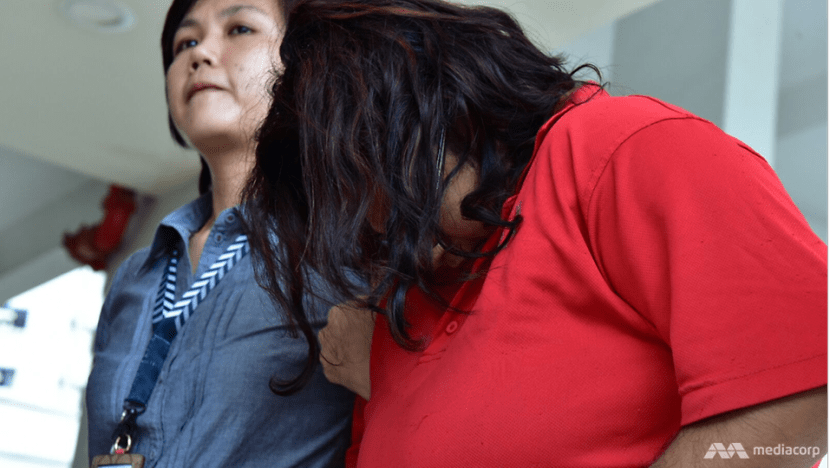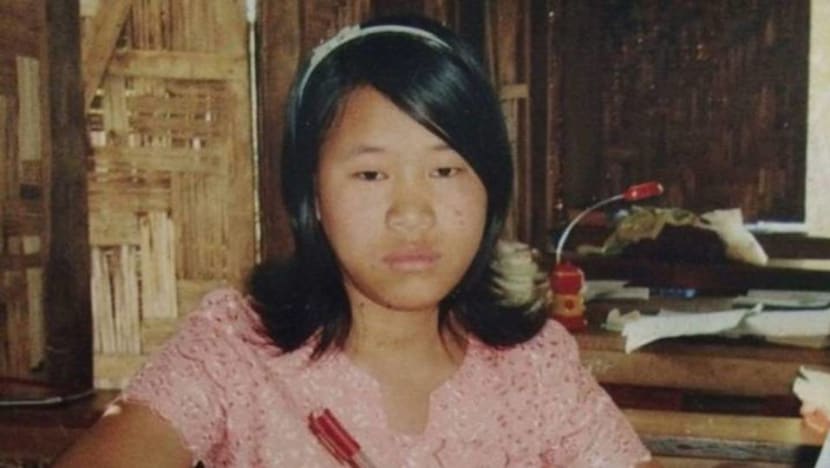commentary Commentary
Commentary: Myanmar domestic worker's death and the problem with the bystander effect
The death of Piang Ngaih Don offers us a chance to reflect on barriers to community support, say a Yale-NUS psychology Assistant Professor and a lawyer.

Gaiyathiri Murugaiyan. (Photo: Nisha Karyn)
SINGAPORE: Singapore woke up to the horrific details of Piang Ngaih Don’s death last week.
Piang Ngaih Don was a foreign domestic worker who had left her toddler in Myanmar to find employment in Singapore.
A year later, she died at the hands of her employers.
Forensic autopsy described 31 fresh scars and 47 external injuries – the outcome of repeated choking, beatings, and prolonged starvation inflicted by her employer, Gaiyathiri Murugayan, and Gaiyathiri’s mother and husband.
SIGN UP: For CNA’s Commentary weekly newsletter to explore issues beyond the headlines
While Gaiyathiri’s family will face their reckoning in court, this case has also caused us to search our souls as a nation.
NO RED FLAGS DETECTED BY OTHERS
As the details unfolded, it became clear that several people had crossed paths with Piang Ngaih Don. In theory, any one of them could have stopped her suffering.
First, there was the employment agency. According to the Ministry of Manpower, an agent had spoken to Piang Ngaih Don twice but had not noticed any issues.
And then there was her doctor. In Singapore, foreign domestic workers attend a medical screening every six months. Piang Ngaih Don passed her screening, but returned several months later with symptoms including runny nose, cough and leg swelling.

During this visit, the doctor noticed bruises and wanted to run further tests. However, Gaiyathiri explained the injuries away, and no follow-up action was taken.
READ: Myanmar maid's death: MOM reviewing how doctors report potential abuse
Finally, there were also two tenants in Gaiyathiri’s household, and neighbours along the HDB corridor.
In this, our chance to prevent a tragedy was missed, and as Minister for Manpower Josephine Teo remarked to the media, we “have to do better”. Court proceedings are ongoing and this will shed light on what might have been seen, heard or sensed.
READ: Commentary: Why a respectful relationship between foreign domestic workers and employers is in everyone’s interest
THE ‘BYSTANDER EFFECT’
The heart-wrenching events of Piang Ngaih Don's death remind us of a famous murder from the 1960s. Along the open streets of New York City, 28-year-old Kitty Genovese was stabbed to death and no one helped.
Psychologists John Darley and Bibb Latane named this the “bystander effect”, when a group of bystanders unthinkably fail to help a victim in need.
Although how many witnesses saw Kitty Genovese’s murder was disputed, other cases powerfully demonstrate this effect. For example, a woman died in Beijing in 2013 after her neck was stuck between railings on a busy street.
Over a dozen people stared or took photos, but it was 30 minutes before a person helped – and by then it was too late.
READ: Myanmar maid's death: Employment agent spoke to helper on 2 occasions but did not pick up any issues, says MOM
To prevent cases like these, some countries have passed bystander laws. For example, it is an offence in Germany if a bystander does not assist in an emergency situation, unless doing so would endanger themselves.
In 2017, an 83-year-old man in Germany hit his head when he collapsed in a bank. CCTV footage identified three people who stepped around the man’s body and did nothing to help.
The court imposed heavy fines on the three bystanders. It found them guilty of failing to respond to a medical emergency, an act punishable by law.
In Singapore, commentators have likewise asked if the bystanders in Piang Ngaih Don's case could be held accountable. This could send a signal that the responsibility to stop human suffering is an all-of-community responsibility.
HELPING: A COMPLEX DECISION-MAKING PROCESS
At the same time, we shouldn’t assume that all bystanders fail to help because of cold-hearted indifference or outright negligence.
For instance, people in Punggol recently rushed to the aid of a woman attacked by a wild boar. In the latest World Giving Index, seven in 10 Singapore residents reported being willing to help a stranger.
To avert future abuse cases, we need to understand the gap between a person’s intention to help and their actions. Psychology research tells us that a person has to overcome many mental barriers before they act in an emergency.
In the first stage, the bystander has to notice that someone needs help. This could be missed if the bystander is distracted.
The bystander also may not recognise the emergency. For example, a commotion may wrongly be seen as an everyday family quarrel that should be left alone.

In such cases, the bystander sometimes looks around to check if other people are worried. If no one else seems concerned, the bystander will likely decide that the situation isn’t an emergency.
If an emergency is identified, the bystander then has to decide how to help. At this second stage, they may wrongly assume that someone else has already helped – especially if others are at the scene. On top of this, the bystander may simply not know how best to help.
Finally, if a bystander passes the first two stages, they are now ready to intervene. Even here, the bystander could fear potential consequences – accidentally making things worse or perhaps, tenants fearing being evicted in this case - and back out at the last minute.
COMING TO GRIPS WITH PIANG’S CASE
The path to helping strangers is a long and uphill one. Measures like bystander laws might change incentives in the third stage (for example by imposing the fear of being caught, and over-riding the fear of other social repercussions).
But we must work harder to notice abuse situations and know how to help. We must work against our natural tendencies to assume things are alright in the first two stages.
READ: Commentary: Instead of robots or commodities, why not treat foreign domestic workers like fellow human beings?
As Singapore comes to grips with Piang Ngaih Don's case and details of the investigations are revealed, perhaps there is no magic bullet to help prevent future tragedies from recurring.
Accepting our moral duty to help those in grave danger is a first step. Individuals can also arm themselves with an understanding of the bystander effect.
To echo the words of psychologist Catherine Sanderson:
Courage is not a virtue we’re born with. A bystander can learn to be brave.
Jean Liu is an Assistant Professor of Social Sciences (Psychology) at Yale-NUS College. Bozy Lu is a graduate from Yale-NUS College with a double major in law and psychology. She is currently a practising lawyer in community disputes and conflict resolutions. This commentary reflects the authors’ personal opinions and does not constitute legal advice.
















